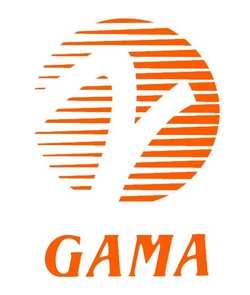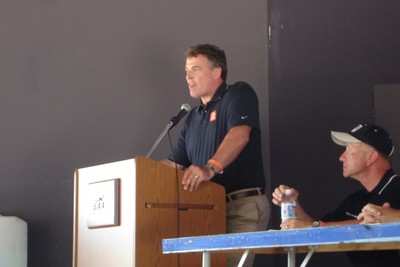CEO Bunce Uses Annual Briefing To Shoot Down FAA's User Fee
Plan
 The
numbers are in... and what numbers they are! Monday, leaders of the
General Aviation Manufacturers Association (GAMA) announced
shipments of every type of general aviation airplane increased in
2006 and the strong numbers have led to another record high in
industry billings.
The
numbers are in... and what numbers they are! Monday, leaders of the
General Aviation Manufacturers Association (GAMA) announced
shipments of every type of general aviation airplane increased in
2006 and the strong numbers have led to another record high in
industry billings.
Speaking at GAMA's Annual Industry Review and Market Outlook
Briefing, GAMA Chairman Dr. John J. Grisik cited factors that
contributed to the banner year.
"Worldwide economic growth, a strong export market, and
increased use of general aviation for both business and personal
use all played a part in this outstanding year for general
aviation," said Dr. Grisik. "As our manufacturers continue to fill
their order books, GAMA anticipates another robust year for general
aviation in 2007 and beyond."
The all-time high for billings totaled $18.8 billion, a 24.1
percent increase over 2005. Year-end, worldwide shipments of
general aviation airplanes totaled 4,042 units for 2006, up 12.9
percent over the previous year's total of 3,580 units. Aside from
the record set for year-end billings, the industry also experienced
an all-time high in business jet shipments.
Piston airplane shipments experienced an 11.6 percent increase
over the previous year. Total units increased from 2,465 in 2005 to
2,750 airplanes in 2006. Shipments of turboprops increased by 11.5
percent, up from 365 units in 2005 to 407 units in 2006. Business
jet shipments increased in 2006, to a total of 885 airplanes, up 18
percent over last year's figure of 750 units.

Bunce Shoots Down User Fee "Myths"
While the numbers announced at Monday's briefing were cause for
celebration for GA, GAMA President and CEO Pete Bunce also took the
opportunity to dispel many of the myths the Administration has put
forth regarding the need for an overhaul of the current funding
mechanism -- a situation that could bring recent growth in GA sales
to a screeching halt.
Bunce began by demonstrating that the current mechanism of
aviation excise taxes is, in fact, a stable and predictable method
of funding, despite the Administration's insistence that it is
not.
"Over the past ten years, the US Congress has routinely given
the Federal Aviation Administration (FAA) more than the President
asked for in the budget. You cannot get much more stable than
that," said Bunce. "Trust fund revenues, which help fund the FAA,
are at record levels and projected to continue to grow through
2012."

Secondly, the Administration has insisted that a new funding
mechanism must be created in order to fund the transformation of
the air traffic control system. However, according to the
President's own budget, the Administration's user fee scheme would
generate approximately one billion dollars less than the current
mechanism.
"The Administration's proposed funding scheme is not about
modernization," said Bunce (shown above, at Oshkosh 2006.) "It is
shifting costs from the airlines onto general aviation."
Representatives with GAMA tell ANN their organization also
challenged the notion that Congress would remain in control of the
FAA budget with implementation of the Administration's user fee
scheme. Under their proposal, the FAA Administrator would set fees
on an annual basis to cover costs as necessary.
"The pressure on the FAA to responsibly spend taxpayer dollars,
currently overseen by the Congressional authorization and
appropriations processes, would go away," said Bunce. "We cannot
afford to give the FAA a blank check to fund its operations."
Lastly, GAMA addressed the belief that a user fee scheme would
be an efficient method to collect revenue. "You cannot implement
user fees without also creating another bureaucracy to collect
them," said Bunce. "The current system of aviation excise taxes is
an efficient and cost effective method to fund the FAA."

"No one is more committed to the modernization of the national
airspace system than aviation manufacturers," said Bunce. "We must
move past this ill-advised user fee proposal and focus the efforts
of our industry and government partners to design and implement a
modernized air traffic management system."
In other words... don't mess with success. At least, unless
you're the FAA...
 ANN's Daily Aero-Linx (05.06.25)
ANN's Daily Aero-Linx (05.06.25) ANN's Daily Aero-Term (05.06.25): Ultrahigh Frequency (UHF)
ANN's Daily Aero-Term (05.06.25): Ultrahigh Frequency (UHF) ANN FAQ: Q&A 101
ANN FAQ: Q&A 101 Classic Aero-TV: Virtual Reality Painting--PPG Leverages Technology for Training
Classic Aero-TV: Virtual Reality Painting--PPG Leverages Technology for Training Airborne 05.02.25: Joby Crewed Milestone, Diamond Club, Canadian Pilot Insurance
Airborne 05.02.25: Joby Crewed Milestone, Diamond Club, Canadian Pilot Insurance






